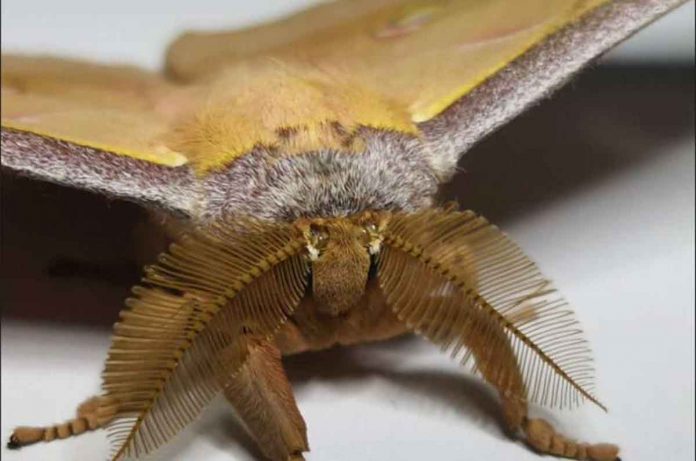The scales on moth wings act as excellent sound absorbers even when placed on an artificial surface, according to researchers at the University of Bristol. The researchers, who recently discovered that moth wings provide acoustic protection from bat echolocation calls, have been investigating whether their structure can inform better performing sound-absorbing panels when they are not moving in free space.
Since the evolution of echolocation in bats 65 million years ago, bats and moths have been engaged in an acoustic arms race between predator and prey. Moths face intense predation from bats and have evolved a slew of defenses to survive, but it’s the scales on a moth wing that hold the key to transforming noise-canceling technology.
“What we needed to know first was how well these moth scales would perform if they were in front of an acoustically highly reflective surface, such as a wall,” said Prof. Marc Holderied of Bristol’s School of Biological Sciences.
“We also needed to figure out how the absorption mechanisms might change when the scales interacted with this surface.”
Prof. Holderied and his colleagues investigated this by placing small sections of moth wings on an aluminum disc and then testing how the orientation of the wing with respect to the incoming sound and the removal of scale layers affected absorption.
Surprisingly, they discovered that moth wings are excellent sound absorbers, even when placed on top of an acoustical solid substrate, with the wings absorbing up to 87 percent of the incoming sound energy. The effect is also omnidirectional and broadband, covering a wide range of frequencies and sound incident angles.
“What’s more impressive is that the wings are doing this while being incredibly thin, with the scale layer being only 1/50th the thickness of the wavelength of sound that they’re absorbing,” lead author Dr. Thomas Neil explained. “This exceptional performance qualifies the moth wing as a naturally occurring acoustic absorbing metasurface, a material with unique properties and capabilities that are not achievable using conventional materials.”
The ability to create ultrathin sound-absorbing panels has significant implications for building acoustics. As cities become noisier, there is a greater need for efficient non-intrusive sound mitigation solutions. Similarly, these lightweight sound-absorbing panels could have a significant impact on the travel industry, with any weight savings in planes, cars, and trains increasing efficiency and lowering fuel consumption and CO2 emissions.
Their findings were published in the journal Proceedings of the Royal Society A: Mathematical and Physical Sciences. The scientists intend to replicate the sound-absorbing performance of the moth by designing and building prototypes based on the moth’s sound-absorbing mechanisms. The absorption observed in moth wing scales is all in the ultrasound frequency range, which is above what humans can hear. Their next challenge is to create a structure that can operate at lower frequencies while retaining the moth’s ultrathin architecture.
Prof. Holderied concluded, saying: “Moths will be the inspiration for the next generation of sound-absorbing materials. According to new research, one day you will be able to cover your walls with ultrathin sound-absorbing wallpaper that mimics the mechanisms that give moths stealth acoustic camouflage.”

